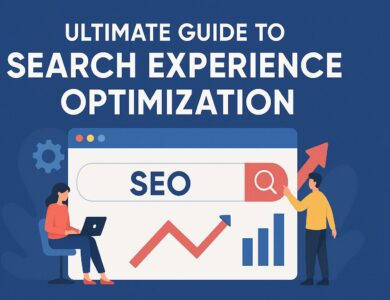How to Develop An Effective Outreach Strategy For Your Business

As new strategies are implemented to increase the visibility of a website, link building will not go away anytime soon. Quality backlinks help you rank higher in the SERPs and have a huge positive impact on your website and brand’s overall reputation. In this regard, digital marketing is no different from traditional marketing, so an effective outreach strategy is something you can’t do without.
In the pre-internet era, salespeople called potential customers, sold their services over the phone, or started a new business in person.
Today, a single email can connect you with influencers, leads and prospects, clients, brand representatives, and anyone else who can be critical to marketing your product or service.
You don’t even have to pick up the phone to run a successful ad campaign. All you need is a reliable internet connection (we recommend using Mediacom Internet), a solid outreach strategy, quality content to promote, and a corporate email account.
Why is an effective outreach strategy important?
An effective outreach strategy is important to businesses as it provides numerous benefits that can positively impact their growth and success.
First, outreach helps build brand awareness and reach new audiences, increasing company awareness and visibility. This results in a wider reach of leads, which can lead to more leads and sales.
Outreach also allows companies to build relationships with their target audience and build trust, which can lead to a loyal customer base. By personalizing the reach and addressing specific pain points, companies can ensure that their message resonates with their potential customers, increasing the likelihood of a conversion.
In addition, tracking and measuring advocacy success allows organizations to continuously improve their strategy and make data-driven decisions. In general, an effective outreach strategy is essential for organizations to achieve their goals and drive growth.
How to build an effective outreach strategy?
Developing an effective outreach strategy is essential for any business looking to build relationships, generate leads, and grow its brand. Here are the steps to building a successful outreach strategy:
Define your goals
Determine what you hope to achieve with your outreach efforts, such as: Increasing brand awareness, generating leads, increasing website traffic, etc.
Take a moment to think about your intentions before engaging in any kind of public relations. There are four main categories of people to contact: the media, companies, customers, and the general public. Determine which category you want to focus on with the particular effort.
Then think about a typical person you would contact. When addressing the webmaster, think about what kind of presentation they will be interested in. What would add value to their content?
Also, when approaching a company, make sure you have a solid offer for them. Business decision-makers don’t just want to help you out of altruism. You have to scratch their back so they can scratch yours.
Define your target audience.
Find out who your ideal customers are and where they can be found online. This will help you focus your outreach efforts and ensure that your message resonates with your target audience.
Study your potential customer.s
Research potential customers to find out what interests them, what problems they face, and what types of content they use.
Choose Your Channels
Choose the channels you use to reach your potential customers. For example, email, social media, direct mail, etc. Consider where your target group spends the most time and what channels they prefer to use.
Not all reach channels are the same, so do your best to identify the channels your potential customers are most active on. Once you’ve done that, meet them there and connect with them on their premises – for example, if you notice a client is particularly active on LinkedIn, see if you can connect through the platform.
Create compelling content
Create high-quality, relevant, and compelling content that captures the attention of your potential customers and helps grow your brand.
Personalize your reach
A thoughtful, tailored message can be critical to driving a sale. Customers want to feel seen, head, and understood. If you can convey all of this through your messages, you will be able to build the kind of trust you need to build strong and productive relationships.
Personalize your reach by using your prospects’ names, addressing their specific pain points, and tailoring your message to their interests.
Use a tracking system.
Let’s say you successfully contacted a client and had a productive consultation. Now you need to indicate when they can expect something from you and get back to them quickly enough to make your conversation memorable.
Sending an additional message shortly after the engagement is the best way to achieve this. Implement a tracking system to keep in touch with potential clientsregularlys.
Track and measure success
Track your outreach efforts to determine what works and what doesn’t. This will help you make data-driven decisions and continually improve your outreach strategy. Documenting your customer relationship efforts in your favorite customer relationship management (CRM) system is critical to the success of your customer relationship plan.
By keeping all your lead data in one central location, you can easily pick up where you left off without having to search for information, greatly simplifying the rest of your sales process.








revelent topic and information thanks